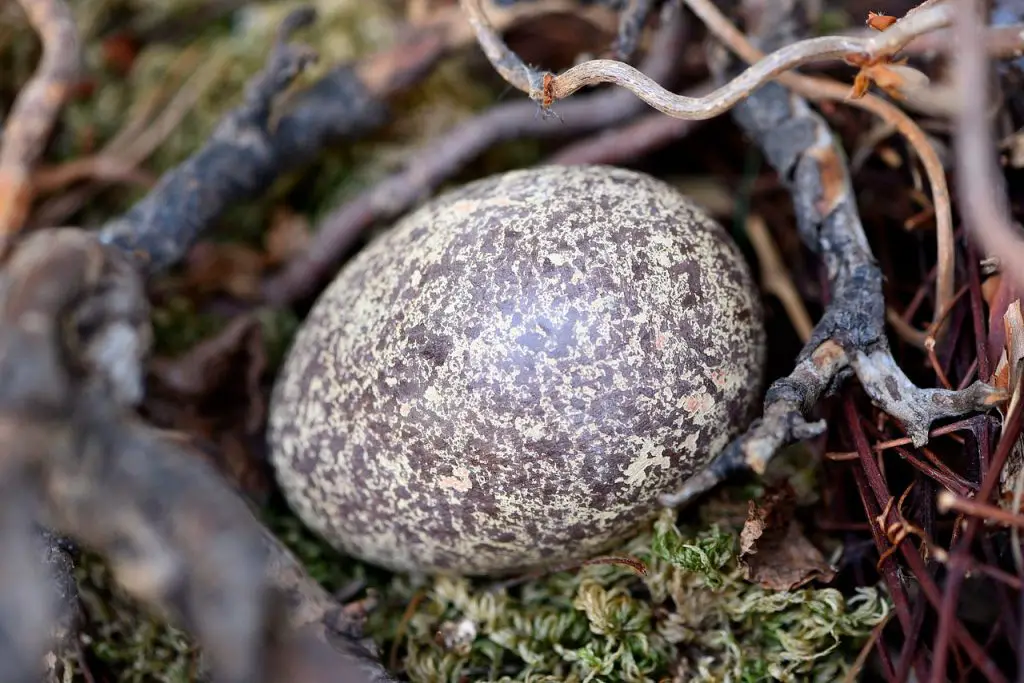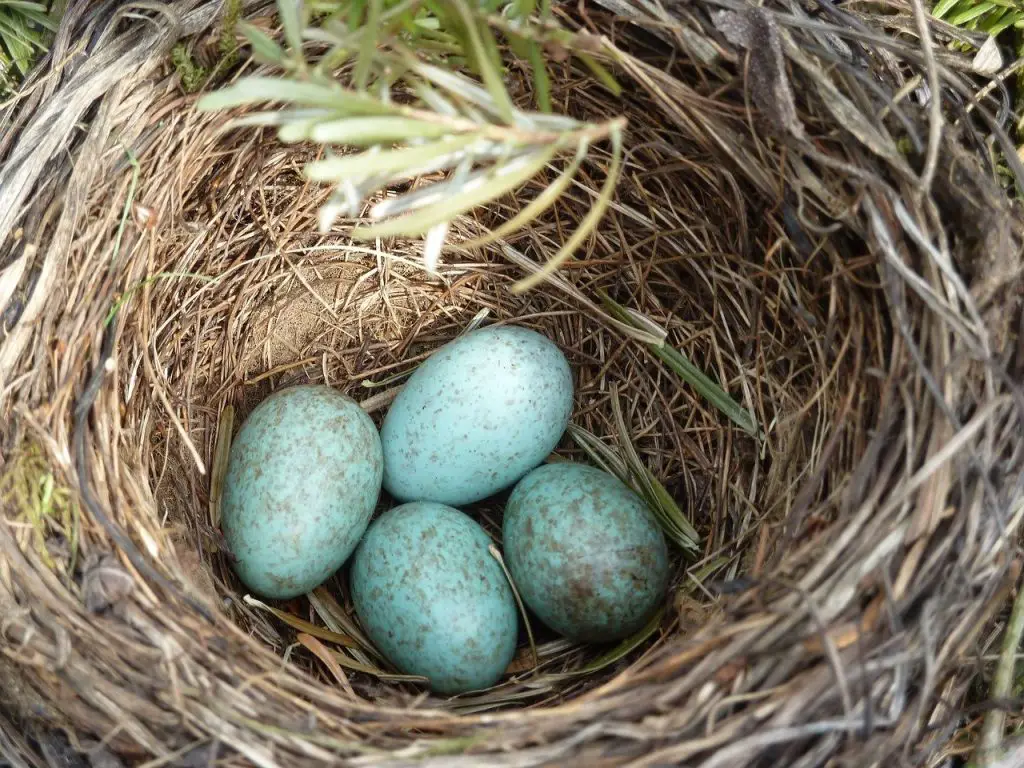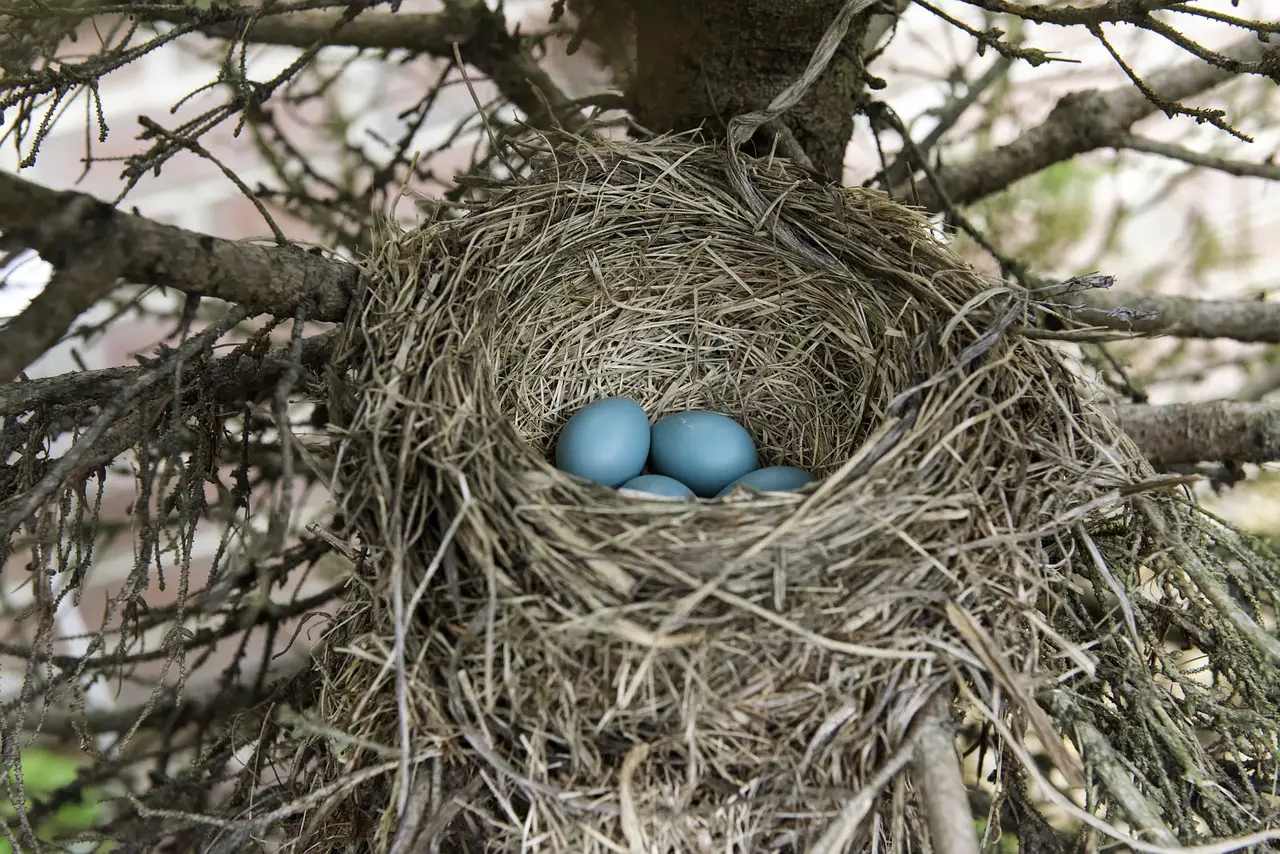Birds evolved from reptiles about 160 million years ago. It should be no surprise that they have some characteristics similar to reptiles, such as having scales on their feet/legs and laying eggs. However, the eggs of reptiles and birds form differently.
Eggs form in the ovary and can become fertilized or remain unfertilized. The egg will grow in the oviduct and will swell with proteins, albumen and membrane to take shape. Calcium deposits give the egg its hard shell.
Birds are warm-blooded animals like mammals, meaning their bodies maintain internal temperature consistently regardless of external conditions. The purpose is to maintain high energy levels and metabolic/homeostatic levels. All this translates to a well-coordinated and balanced flight. Birds’ feathers and wings help them fly and maintain balance in the air. At the same time, birds require strong eyesight and muscle coordination to streamline their flight.
On the other hand, reptiles are cold-blooded animals and rely on air/water temperature to regulate their body’s metabolic and homeostatic levels.
Feathers, hollow bones, and hard-shelled eggs are primary characteristics that make birds different from other animals.
Do you know why birds lay eggs? Find out in this article I wrote

How do bird eggs form?
Birds have sophisticated egg development mechanisms. The process starts with hormonal changes within the female bird’s body. The cell increases in size, and the yolk development begins within a few days.
The growing egg transfers from the ovary into the oviduct, a tube-like structure that carries out the rest of the development. The egg looks for sperm, and once found, the fertilization process begins. The development continues in the oviduct.
Male birds’ testes increase in size and undergo hormonal changes during the breeding season. At the same time, female birds’ ovaries and oviduct increase in size to streamline the fertilization process and carry out egg development.
An unfertilized egg undergoes significant changes without developing the embryo. The body adds albumen, proteins, and membrane to the egg during the process. As a result, this process hydrates and plumps the mass, giving the egg a well-recognized oval shape.
Once the egg adopts an oval shape, the shell formation begins using calcium deposits on the outer membrane. With birds, the shell’s thickness, texture, membrane, surface, and internal structure vary from species to species.
In general, larger bird species have eggs with thicker shells that align with the egg’s structural size to maintain strength, stability and protect the internal components. For example, the Emu is a large bird with eggs that are one millimetre thick and weigh about 900 grams.
Do you know why bird eggs are different colours? Find out in this article I wrote
How long does it take for a bird egg to form?
The time required for egg development and incubation varies from species to species. For example, it takes around 10-14 days for small songbirds to fully develop their eggs and hatch their young. Likewise, woodpeckers take more than three weeks to carry out the egg formation. Ducks, game birds, and shorebirds take about 15-20 days to complete the egg development.
Hens develop eggs from ova present in their ovaries. Once the ova ripens and matures, it travels down the oviduct. A hen takes around 24 hours to produce an egg. That’s why most chicken species lay one egg per day.
During the process, the ova develops into the yellow yolk. After creating the yolk, it takes around 24 hours to assemble the internal structure and the outer layer.
Do you know where birds lay their eggs? Find out here

Where do bird eggs develop?
Most birds develop shelled eggs in the left oviduct. It is a sophisticated structure that contains five components, and each component has a different histological structure and plays a crucial role in various stages of egg formation.
These components are the infundibulum, magnum, uterus, isthmus, vagina (shell gland). The oviduct’s wall is similar to the primary structure of the bird’s tubed organs. Not only does it consist of epithelium and submucosa, but it also has smooth muscles covered by the peritoneum to develop the external layers.
The ciliated and glandular cells are two essential cell types found in the oviduct’s epithelium. The number of cells in the oviduct varies, depending on its function. For instance, the magnum contains many unicellular glands that play a critical role in albumen production. Likewise, the ciliated cells have specialized structures known as cilia that streamline cloacal functions.
Furthermore, the oviduct also contains multicellular tubular glands that open into mucosal folds of different areas except for the vagina. These folds spiral along the oviduct to ensure the egg rotates and moves smoothly.
The smooth muscles’ outer layers ensure the developing eggs move down the oviduct and carry out reserve peristalsis in the infundibulum to transport the sperm for fertilization.
Do eggs grow after being laid?
Many people ask whether eggs after a bird lay them but an egg’s size does not change once a bird lays it. Eggs will have the same size during different stages of incubation without getting bigger or smaller before hatching.
For example, when a chicken lays an egg, the owner takes it away and uses it as food. On the other hand, some people allow the egg to undergo the incubation process, ensuring the full development of a healthy young bird.
A chicken takes around 24 hours to develop an egg in the oviduct and an additional 21 days for hatching. However, when the egg fertilizes with the sperm, a baby bird grows inside the egg. The hatching occurs when the baby bird fully develops and grows enough to hatch and meet the outside world.
Bear in mind that eggshells have a wide range of appearances, depending on the species. For example, the American Robin lays bright blue eggs. Some American Robin species also lay blue eggs with brown speckles. Similarly, a hen lays eggs with a brown or white shell. Anyway, the egg size does not increase or decrease once it is laid.
If you want to know why bird eggs have hard shells click here

